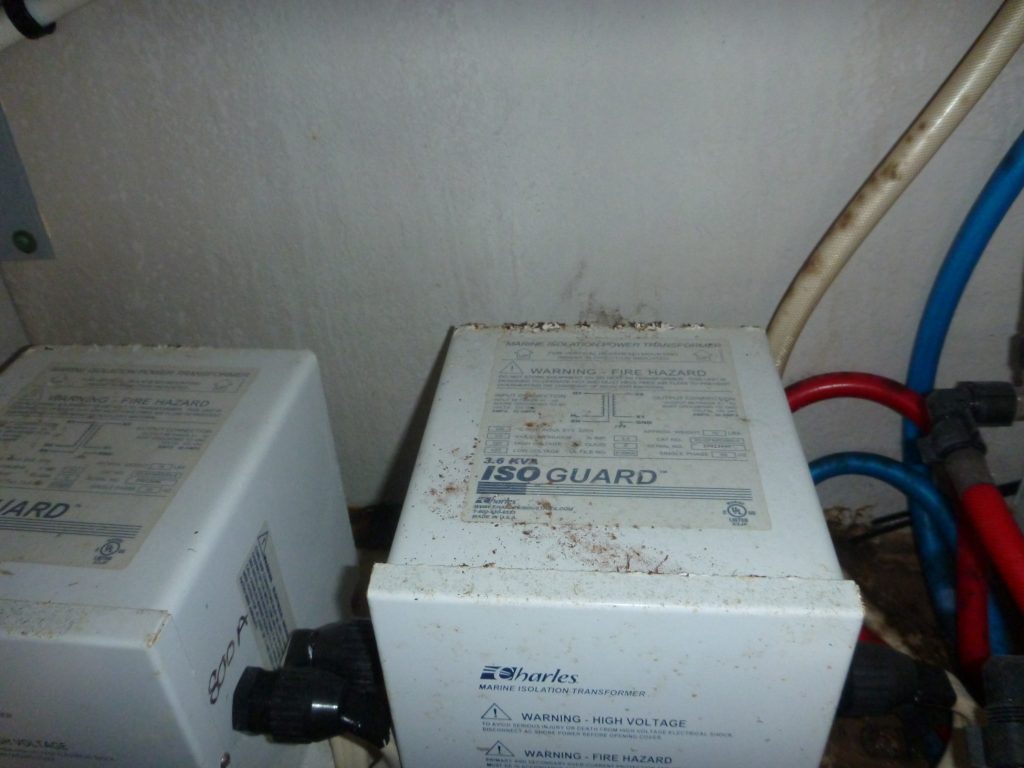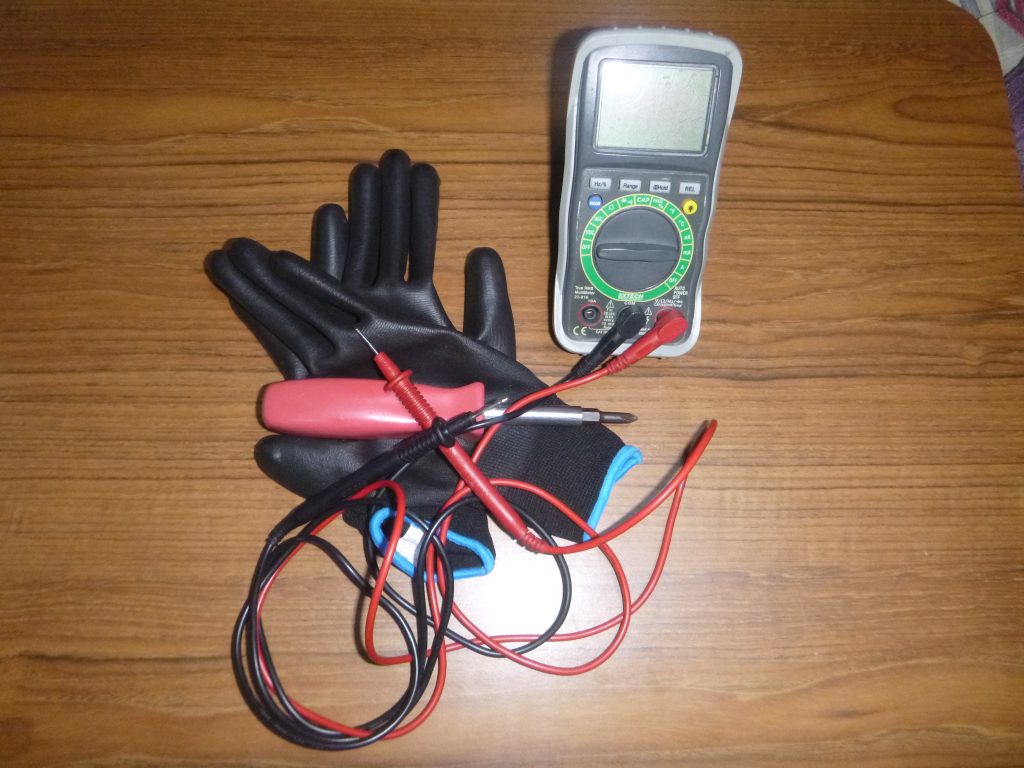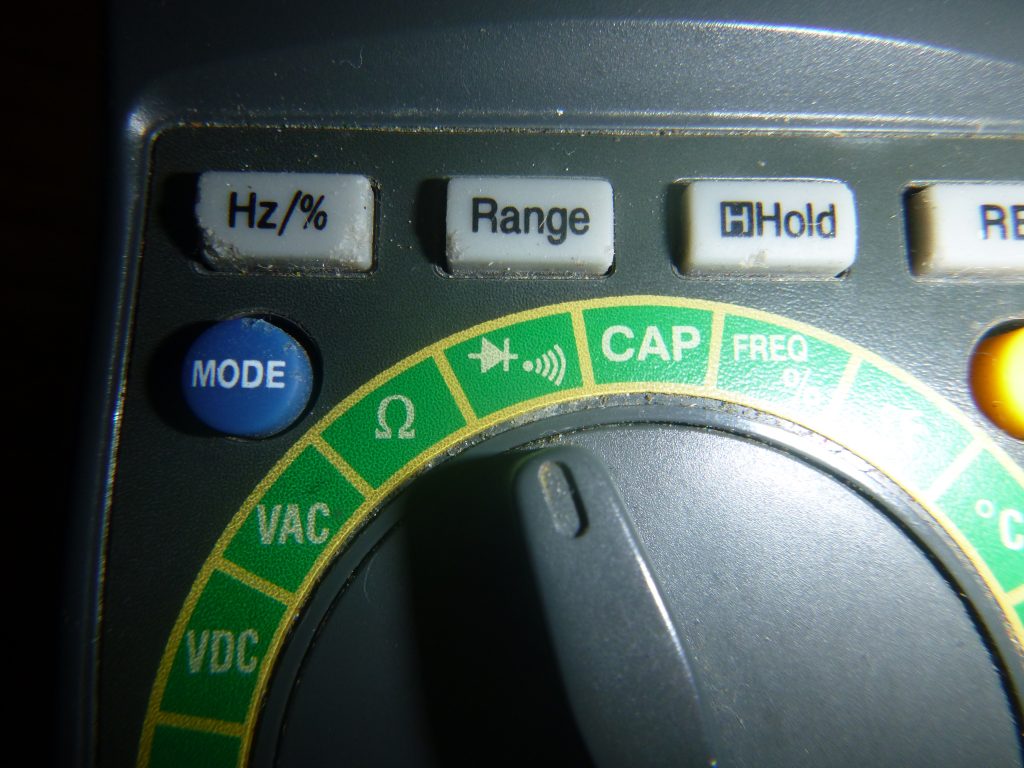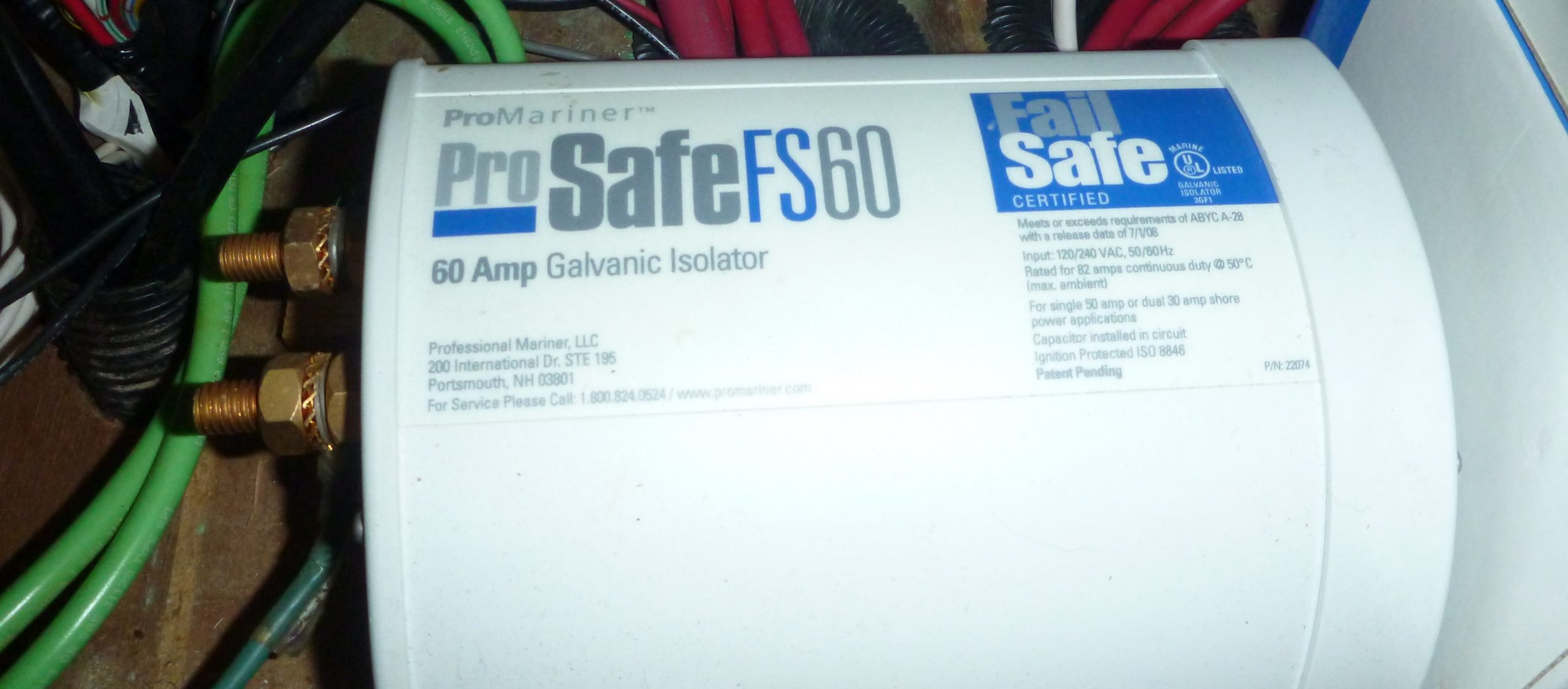By Capt Wayne Canning, AMS

There is a lot of misunderstanding about how corrosion of underwater metal happens on a boat and how being in a marina effects underwater metal corrosion. Often mislabeled as “Electrolysis” which is a different process, it should correctly be referred to as “galvanic corrosion.” Many are quick to blame the marina or the boat next to them if they find their underwater anodes or zincs are disappearing or worse yet their underwater metal is suffering from galvanic corrosion. The fact of the matter is that in most cases the problem is often not the fault of outside sources, but rather, is located on the boat having the problems. Of course this can indeed sometimes be exasperated by, or caused by the marina or other boats nearby. The truth is if a boat is properly set up it should, for the most part, be protected from outside faults.
Corrosion Defense

The best defense from outside anomalies when in a marina is having an isolation transformer to completely isolate your boat from the shore power lines. Isolation transformers physically separate the wiring, blocking any stay currents and voltage spikes into your boat. The problem is these units are expensive, bulky, generate a fair amount of heat and quite heavy making them impractical for many boats.
There is an alternative to the heavy and expensive isolation transformers that can offer some protection from the most likely sources of destructive stray electrical currents while staying in a marina. A device called a “galvanic Isolator” can help block stray DC current from entering your vessel and possibly causing damage or reducing anode life. Most boats built after the mid-nineties would be equipped with one of these devices and many older boats have been retrofitted with one.
What is a Galvanic Isolator?

So what is a galvanic isolator and how does it work? A galvanic isolator is basically a one way valve for low voltage DC current. For those who like technical talk it is a blocking diode assembly in series with the ground wire. Isolators are installed in the shore power ground wire to block stray DC voltage from entering the boat through the ground wire and then exiting through grounded underwater metal, damaging that metal in the process. It does this while at the same time allowing AC shorts and faults a path out of the boat and back to ground at the marina transformer. So why would we need to block DC voltage on an AC line? To understand this it helps to understand how an AC ground wire is connected to the marina and other boats.
Why is it Needed?
A shore ground wire is connected to the ground of the transformer on shore which supplies power to your boat and all the other boats on the dock near you. This ground wire is connected to all the ground wires from the other boats in the marina using the same transformer. This is referred to as a common ground. DC voltage can sneak into this ground from other boats in adjacent slips. Another boat may have a DC leak into their ground that will then flow to all boats nearby. This often happens when another boat is using a cheap automotive battery charger or has a DC fault aboard.
Even if there are no faults on any boats near you, stray current can still be induced from the imbalance of underwater metals in those boats. Think of each boat in the nearby slips as cells of a battery and the water they are in as the electrolyte for that battery. Any imbalance between these cells can cause small amounts of DC current to flow from one boat to another. In a perfect world with all things balanced and no resistance in any grounds all the boats would be at the same potential and there would be nothing to set up and current flow. But of course there are very few perfect boats or marinas.
Blocking Problems

This is where a galvanic isolator comes into play. It will block any of this low voltage DC current trying to find a balance from getting into your boats ground system. If this current comes into your boat through the common ground it will want a way back out and that way could be through your grounded underwater metal. When it does this it takes particles of the metal with it damaging and weakening that metal. Anodes of Zinc, Magnesium, or Aluminum are installed to protect underwater metals from some unbalance between other metals on your boat but when outside currents are introduced these anodes can quickly be wasted away trying to protect you from other boats metals.
Types of Isolators
Galvanic isolators have changed over the years and it helps to understand the types that are out there and what may be on your boat. Prior to 1980 there were few builders using galvanic isolators but by the late eighties and early nineties many builders started installing isolators as standard equipment on boats with shore power. The early units were basic and worked well until overloaded. A lightning strike or other surge could damage the diodes causing them to fail in an open mode. This meant if there was a surge damaging the isolator the ground would be left open or disconnected. This is of course is dangerous as there would then be no path back to ground for an on board fault. The problem was there is no real way to know that the unit has failed without testing it.
To remedy this ABYC started requiring isolators have a system to warn the user that the unit failed and is open. This worked okay but there were frequent false alarms that ended up confusing owners. These false alarms were often the result of other non-related electrical issue that false warnings. As a result of this, newer technology was developed to allow the units to fail closed. These new galvanic isolators are called fail-safe isolators. What this means is should the unit be compromised by a surge or other fault it will fail in a closed position. This means the ground circuit will still be available to let AC faults safely exit the boat through the ground lead as they are supposed to. Isolators are rated to their intended load and for most boats this is either 30 or 50 amps depending on the shore service the boat is set up for.
Is it Working?
With a better understanding of just what a galvanic isolator is and how it works we can start checking out our own boat to see if there is one installed and maybe more importantly if it is working correctly and the ground is doing what it should be. Luckily the tests for these units is pretty simple.

In most cases the only tools needed are a VOM or Volt Ohm Meter with a diode checking mode and a couple of hand tools to access the back of the AC electrical panel. Be sure to verify all AC power is disconnected prior to stating any tests. This means unplugging the boat from shore power and if an inverter is installed verify the DC power is disconnected from the inverter. It is not enough to simply turn off the inverter it must be disconnected from its DC power supply to prevent any possibility of outputting AC. Additionally it is a good idea to use your meter to verify all power is off before opening any panels or touching any electrical components. I also suggest using lightweight rubber gloves just in case. And of course never stand in a wet bilge or have body contact with large grounds such as engines or generators.
If it not known for sure if the boat has a galvanic isolator a quick physical inspection could help locate it. Most isolators are simple square or rectangular boxes usually black or silver. Some will have cooling fins and some may be cylindrical. They are normally installed either close to the shore power inlet or behind the AC electrical panel but I have seen some hidden in more obscure locations. They are installed in the shore ground wire so that the ground passes through them. If not in an obvious location try following the ground wire from the inlet to the panel. If no isolator is found at least verify that the ground is intact and consider installing one. If installing a new one always use a fail-safe type.
The Test

The test is really pretty simple using the diode testing function on the VOM keeps it simple. First disconnect the shore power and bring the shore end into the boat. Set your meter to diode test mode. On most meters this will be a solid triangle with horizontal and vertical lines or the Delta symbol. For 120 30 amp cords connect one meter lead to the ground pin, the l shaped one, for 220 50 amp cords the ground will be the metal ring or tab on the outside of the plug. Next connect the other lead to the AC ground. This can be done by using any 120 outlet ground pin or the AC ground bus bar. You should get a reading of between .8 and 1.0 volts. Next swap the leads to test in the other direction again you should get a reading of .8 to 1.0 anything else indicates a problem. If the meter has a .0L your ground is open or disconnected and should be fixed as soon as possible. This is likely due to an old style isolator that has failed or a bad wire connection someplace. Either way it should be fixed. If you can access the isolator remove the unit and bench test it, if the results are the same the isolator is bad but if it checks okay the wiring is at fault. If the unit is bad replace it and if this cannot be done right away temporarily connect the ground wires that were connected to the isolator together. This will at least keep your ground in place until the isolator can be replaced.

If the meter reads 0.000 then there is no isolator or it is a failed in safe mode keeping the ground intact. Just leave it as is until a replacement unit or new unit can be installed. For boats with two or more shore cords each cord will have to be checked separately.
At this point you should have a pretty good understanding of what a galvanic isolator is and what it does. You will also know how to test it to make sure it is working properly. If you notice your anodes are being wasted away too fast, most should last a year or so, or you notice pinkish color to your underwater bronze before blaming others you should check your galvanic isolator. Whether there are signs of problems or not isolators should be checked annually or after any power surges or nearby lightning strikes.
By Capt Wayne Canning
If you found this helpful please return the favor to keep the information (and rum) flowing. Please consider helping out with a bit cash. I am a cheap ass sailor and every little bit helps! Thanks!

If you are thinking of buying a product related to the article please check the Amazon link below. I never refer any product I would not buy or have bought myself.
If you want the pod cast version please use the player below
Podcast: Play in new window | Download

